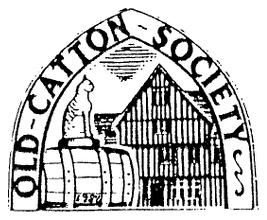Mr Brian Hedge, the speaker at our July meeting, has been collecting photos of old Norfolk for the past 50 years so it was inevitable that fascinating, grainy, black and white photos would be featured in his talk on the “History of Norfolk Broads”. Grizzled faces from the 19th Century stared at us as we were told of the diverse pursuits followed by these marsh-men in order to exact a living from their surroundings. The very existence of the Broads was a product of man's use of natural resources – peat digging in Medieval times – and as rising water levels in the 15th Century brought this occupation to an end alternate ways of maintaining a living had to be found. The photos provided vivid evidence of their efforts to do so, there were eel-men trapping and spearing eels for a demanding London market, wildfowlers in their gun-mounted punts ready to stalk and then kill a score of ducks with one blast of their mammoth shot guns, marsh-men harvesting reed and hay and piling it precariously on flat-bottomed boats, girls hard at work stripping willow for basket making and carefully constructed, netted decoys standing silently ready to lure ducks to the dinner plate. At the same time, along all the interconnecting waterways, black sailed wherries were endlessly moving goods for the local community and helping to link the industries of Norwich with overseas markets.
Then the fast developing railways found the Broads. A line reached Wroxham in 1876 and from then on the Broads were increasingly opened up to recreation and gradually metamorphosed into a “desirable and different” holiday destination. We saw fishing being done for pleasure and not for a livelihood, and family picnics on grassy banks while amateur yachtsmen venturing into secret and unexplored waters. This was all accelerated when John Loynes, a Norwich carpenter, began building and hiring boats at Wroxham for holidaymakers and Arnold Roy, an ambitious shopkeeper, perceived the need for provisions for holidaymakers both afloat and in holiday cottages. Thus “Roys of Wroxham” was born! Bridges and ferries were improved to provide easier access for the newly arrived motor car and small steamers puffed their way up the Bure bringing yet more holidaymakers on excursions from Great Yarmouth. The Broads were being embraced by the 20th Century.
Mr Hedge backed his visual presentation with a recorded commentary packed with information and gave us a thoroughly pleasant journey back in time.
George Jeffries
